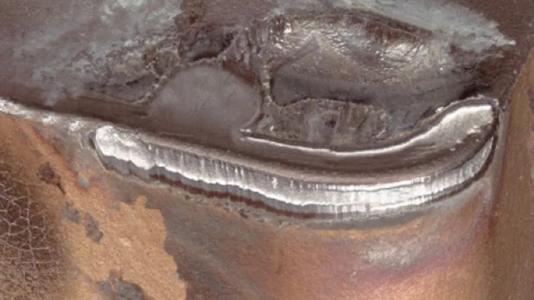
Preface
With the rapid development of China’s automotive industry, the new energy vehicle industry has experienced exponential growth in recent years. Lightweight is a core topic in the new energy vehicle industry, and the core of lightweight is the transformation of traditional materials. Aluminum alloys, with their high strength and light weight, are indispensable materials for lightweight automotive manufacturing. The geometric shapes of auto parts are relatively complex, and the proportion of die-cast aluminum alloy parts in the whole vehicle is increasing, as is the demand for CNC machining of die-cast parts.
The CNC manufacturing of aluminum alloy auto parts mainly requires high efficiency, high stability of continuous production, and continuously reducing costs, which necessitates more detailed control and planning of the entire production process.

Formation of Chip Build-up during Aluminum Alloy Machining
The main characteristic of aluminum in the machining process is its low melting point, which is manifested as “stickiness” in the working conditions. Due to this characteristic and insufficient cooling in actual working conditions, the heat generated by friction during the microscopic machining process cannot be released in a timely or effective manner. As a result, the aluminum melts and adheres to the cutting edge and chip flute of the cutter. When it cools, it instantly solidifies and adheres to the cutter, forming a chip build-up, leading to the scrapping of the cutter. This issue is commonly referred to in the industry as “easy to stick to the cutter.”
Cutters are a consumable in the CNC machining process and account for a significant portion of cost expenditures. The cutting edge of aluminum alloy-specific cutting tools should be sharper, and the chip flutes need special polishing treatment and an aluminum alloy-specific coating to improve the chip evacuation efficiency. The high-efficiency production in the automotive industry necessitates that cutters must increase feed rates and linear speeds, which in turn increases the heat generated during cutting, increases the risk of aluminum melting and sticking to the cutter, and leads to increased costs due to the scrapping of cutters caused by chip build-up.
With the requirements of environmental protection, the CNC machining of aluminum alloys extensively uses MQL (Minimum Quantity Lubrication) as a substitute for cutting fluids. The low melting point characteristic of aluminum, combined with the reduced cooling effect of MQL, further promotes the formation of chip build-up. Tools scrapped due to sticking account for about 409% of the total conventional scrapping of tools. Since traditional methods for dealing with chip build-up generally involve knocking or smashing, very few treated tools can be reused. Therefore, a new solution is proposed.

Treatment Measures
The specific treatment measures of the new solution are as follows:
Remove the cutter with existing chip build-up.
Find solid NaOH and dilute it with water, then place it in a ceramic container.
Once diluted into a NaOH solution, immerse the cutter with adhered aluminum into the solution, ensuring the aluminum-adhered parts are fully submerged, and continue for 2 hours, or prolong the immersion time based on the actual situation. A comparison of the traditional treatment method and the new solution is shown in Table 1.
Chemical Mechanism of Treating Chip Build-up
Taking the commonly used AIS7Mg material for automotive parts as an example, the content of Al is about 93.59%, the content of Si is 6.59%, and the content of Mg is 0.259%. Both Al and Si can react with NaOH solution. Soaking in NaOH solution can remove the main Al components remaining on the cutter. The principle is that the metal reacts with NaOH to produce bubbles (5), which eventually causes the adhered aluminum to fall off. The chemical reaction equations are as follows:
The reaction equation between Si and NaOH is:
Si + 2NaOH + H?O = Na?SiO? + 2H?↑
The reaction equation between Al and NaOH is:
2Al + 2NaOH + 6H?O = 2NaAl(OH)? + 3H?↑
Final conclusion: The aluminum is removed, and the cutting tool can be reused.
Experimental Verification
The above theory was tested using taps. The reason for choosing taps is that in aluminum alloy machining, taps are among the higher-value cutters and are tasked with a longer service life mission. Moreover, their geometric shape is complex, and the grooves are narrow, making it basically impossible to clear the adhered aluminum using physical methods after the sticking phenomenon occurs. Testing this type of cutter is more meaningful and representative.
Due to the high heat generated during machining and possible insufficient cooling, the aluminum is instantly melted and sticks in the grooves, indicating that the tap can no longer be used, and the thread profile is damaged.
According to the above chemical theory, the tap with adhered aluminum (chip build-up) was completely soaked in NaOH solution. After complete immersion in NaOH, the tap was visually inspected, and the chip build-up in the grooves had completely fallen off, with residual aluminum debris in the experimental vessel. The treated tap was used again to machine workpieces, and the thread profile of the workpiece was found to meet the requirements, with the thread being qualified. The tap could be reused.
Conclusion
The automotive parts industry is characterized by mass production. The matching of new equipment and specially designed cutters requires a large amount of cutting verification during the initial setup. During the verification process, due to factors such as parameter matching, the breaking-in of new equipment, and the inexperience of the debugging personnel, the phenomenon of chip build-up on cutters is relatively common, leading to a straight-line rise in scrapping costs and production cycles. Additionally, issues such as changes in blank allowances and momentary cooling instability during the later stages of mass production, which lead to aluminum adhesion, have been effectively resolved after applying this method. This has greatly saved on cutter costs and processing time, increased the service life of the cutters, and significantly reduced the production costs for the enterprise.








